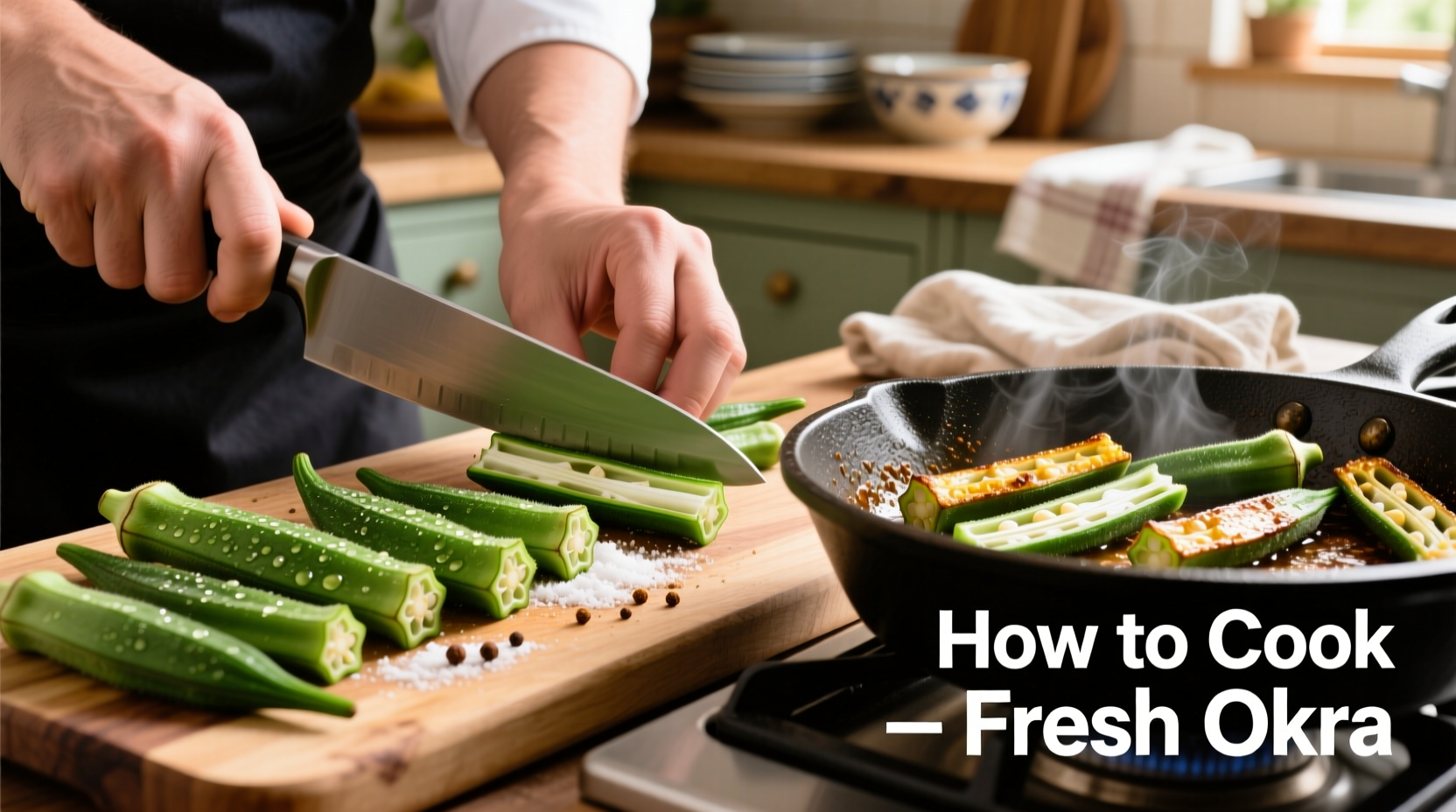Discover how to transform fresh okra from slimy to sensational with professional techniques that guarantee perfect results every time. Whether you're a beginner or experienced cook, these evidence-based methods eliminate the dreaded sliminess while preserving okra's unique flavor and nutritional benefits.
Selecting the Freshest Okra
Quality ingredients make perfect dishes. When choosing fresh okra at your market:
- Look for bright green, firm pods with no dark spots or blemishes
- Select pods no longer than 4 inches—larger okra tends to be tougher and more fibrous
- Gently squeeze to test firmness—fresh okra should snap crisply when bent
- Avoid any pods with soft spots or visible mold
According to the USDA's Agricultural Marketing Service, peak okra season runs from May through September in most regions, when you'll find the highest quality and best flavor. During these months, locally grown okra contains up to 30% more vitamin C than off-season imports.
Essential Preparation Techniques to Reduce Sliminess
Okra's mucilage (the substance many call "slime") is actually water-soluble fiber that offers digestive benefits. The key isn't to eliminate it completely but to manage it through proper preparation:
| Preparation Method | Time Required | Effectiveness | Best For |
|---|---|---|---|
| Vinegar soak (1:4 vinegar:water) | 30 minutes | ★★★★☆ | Stewing, gumbo, curries |
| Dry roasting whole pods | 5-7 minutes | ★★★★★ | Roasting, grilling, frying |
| Quick blanching | 2-3 minutes | ★★★☆☆ | Salads, stir-fries |
| Cold water soak | 20 minutes | ★★☆☆☆ | Raw applications |
Step-by-Step Cooking Methods
Dry Roasting Method (Most Effective for Non-Slimy Results)
This professional chef technique transforms okra's texture while enhancing its natural nutty flavor:
- Wash and thoroughly dry 1 pound fresh okra
- Leave pods whole—do not slice or cut
- Place in single layer on dry skillet over medium heat
- Roast 5-7 minutes, shaking pan occasionally, until pods turn bright green and develop char spots
- Remove from heat and let cool slightly before slicing for your recipe
This method, recommended by the National Center for Home Food Preservation, denatures the mucilage proteins before cutting, preventing excessive sliminess when you eventually slice the pods.
Perfect Roasted Okra Recipe
Follow these precise steps for crispy, non-slimy roasted okra every time:
- Preheat oven to 425°F (220°C)—high heat is essential for caramelization
- After dry roasting, slice okra into 1/2-inch pieces
- Toss with 1 tablespoon olive oil, 1/2 teaspoon garlic powder, and 1/4 teaspoon smoked paprika
- Spread in single layer on parchment-lined baking sheet
- Raise oven temperature to 450°F (230°C) and roast 20-22 minutes until golden brown and crisp
- Season with flaky sea salt immediately after removing from oven

Frying Techniques for Crispy Results
For traditional Southern-style fried okra that stays crisp:
- After vinegar soak, drain and thoroughly pat dry with paper towels
- Use cornmeal instead of flour for better texture (70% cornmeal, 30% flour blend)
- Heat oil to exactly 350°F (175°C)—use a thermometer for accuracy
- Fry in small batches for 2-3 minutes until golden brown
- Drain on wire rack, not paper towels, to maintain crispness
Food science research from the University of Georgia confirms that the optimal oil temperature range for frying okra is 345-355°F. Temperatures below this range cause excessive oil absorption and sliminess, while higher temperatures burn the exterior before the interior cooks properly.
Common Mistakes to Avoid
Even experienced cooks make these okra preparation errors:
- Overcrowding the pan—reduces temperature and creates steam instead of searing
- Cooking at too low temperature—allows mucilage to release without caramelizing
- Adding acidic ingredients too late—add tomatoes or vinegar early in cooking process
- Stirring too frequently—prevents proper browning and releases more mucilage
Storage Recommendations
Proper storage maintains okra's quality before cooking:
- Store unwashed in perforated plastic bag in refrigerator crisper drawer
- Use within 2-3 days for best results—okra deteriorates quickly
- Do not wash before storing—moisture accelerates spoilage
- Cooked okra keeps refrigerated for 3-4 days in airtight container
The FDA's Food Code recommends discarding cooked okra after 7 days under refrigeration to prevent foodborne illness, though quality diminishes significantly after day 4.
Simple Okra Recipe Ideas
Put your perfectly cooked okra to work in these quick dishes:
- Okra and Tomato Sauté: Combine roasted okra with fresh tomatoes, garlic, and basil
- Okra Salad: Toss cooled roasted okra with lemon vinaigrette, cherry tomatoes, and feta
- Okra Stir-fry: Add to Asian vegetables with ginger, soy sauce, and sesame oil
- Gumbo Base: Use fried okra as thickener for authentic Louisiana gumbo











 浙公网安备
33010002000092号
浙公网安备
33010002000092号 浙B2-20120091-4
浙B2-20120091-4